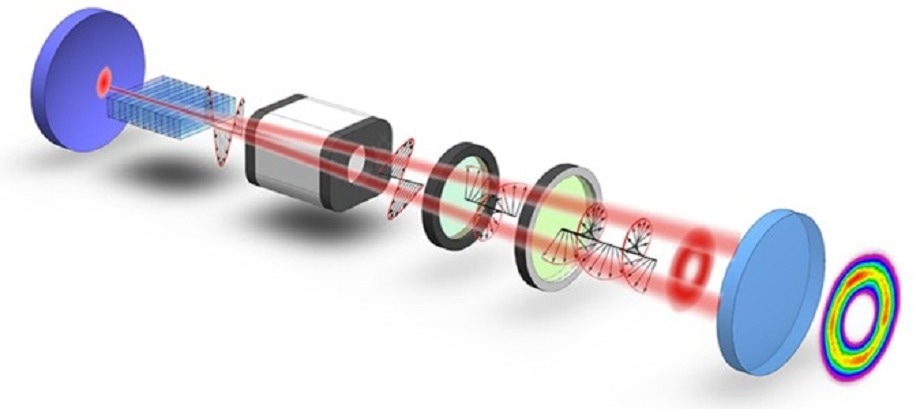New possibilities have paved the way for high-capacity optical communications and more effective evolution from a basic pump mode to a preferred parametric mode.
 Janus optical parametric oscillator. Image Credit: Wei et al.
Janus optical parametric oscillator. Image Credit: Wei et al.
Laguerre-Gaussian (LG) modes are a kind of light wave that has the potential to carry the external torque of photons as they move via space. They are beneficial in numerous fields, from optical communications to super-resolution imaging. The state-of-the-art developments in these and other applications demand trustworthy and color-tunable LG mode laser sources, which are yet available.
An optical parametric oscillator (OPO) is a device that could produce a wavelength-tunable laser beam, so it has been used to identify a color-tunable LG laser source—typically in one of two ways.
One method is to alter a regular beam into an LG beam with the help of a phase component exterior of the OPO, but this makes the LG beam less pure. The other method is to utilize the higher-order resonator mode so that it could create LG at source in a direct manner, but this has been a continuing process.
As stated in the Advanced Photonics Nexus journal, a research group from Nanjing University and Sun Yat-Sen University recently developed a two-facing “Janus” OPO scheme for producing high-efficiency and high-purity broadband LG modes along with tunable topological charge.
The Janus resonator comprises two cavity mirrors, a periodically poled lithium niobate crystal, a quarter wave plate, a Faraday rotator, and a vector vortex wave plate. Unlike earlier intracavity mode conversion schemes depending only on self-reproductions of the phase and polarization, the Janus OPO initiates an extra imaging system into the resonator to help self-reprove the complicated wavefront, which significantly enhances the performance of LG OPO.
The Janus cavity mode has two different modes that cause an intersection. The mode available at the front end of the resonator is a Gaussian-like pattern, which could better match the Gaussian pump light for a high gain to be achieved.
At the output end, the cavity mode slowly and smoothly develops into a standard LG mode, guaranteeing high-purity LG beam output and efficiently decreasing the diffraction loss.
In contrast, the reconstruction of the intensity distribution at the time of the imaging process actively develops a high-purity LG mode— instead of passive mode filtering—which additionally decreases the losses of the resonator.
The Janus OPO largely reduces the loss of the resonator through imaging design and improves the efficiency and purity of the output LG beam.
Yong Zhang, Study Corresponding Author and Professor, Physics, Nanjing University
The output LG mode consists of a tunable wavelength ranging between 1.5 μm and 1.6 μm, with a conversion efficiency above 15%, a controllable topological charge up to 4, and a mode purity as high as 97%.
The efficiency of the OPO can be further improved by double-passing the pump light, and the wavelength band of the output LG beam has the potential to expand to visible and ultraviolet, offering a powerful tool to explore the interaction between LG beams and matter, for potential applications like super-resolution imaging based on stimulated emission depletion (STED) microscopy and precise rotation sensing.
Yong Zhang, Study Corresponding Author and Professor, Physics, Nanjing University
According to Dunzhao Wei, Associate Professor in the School of Physics at Sun Yat-Sen University and first author of the report, “The scheme of Janus OPO can be further expanded to vector beam output and entangled LG photon generation, directions that will play important roles in areas such as atomic ensemble spin-orbit interaction, laser fabrication, and higher-entanglement quantum sources.”
Journal Reference
Wei, D., et al. (2023) Generation of high-efficiency, high-purity, and broadband Laguerre-Gaussian modes from a Janus optical parametric oscillator. Advanced Photonics Nexus. doi.org/10.1117/1.APN.2.3.036007.